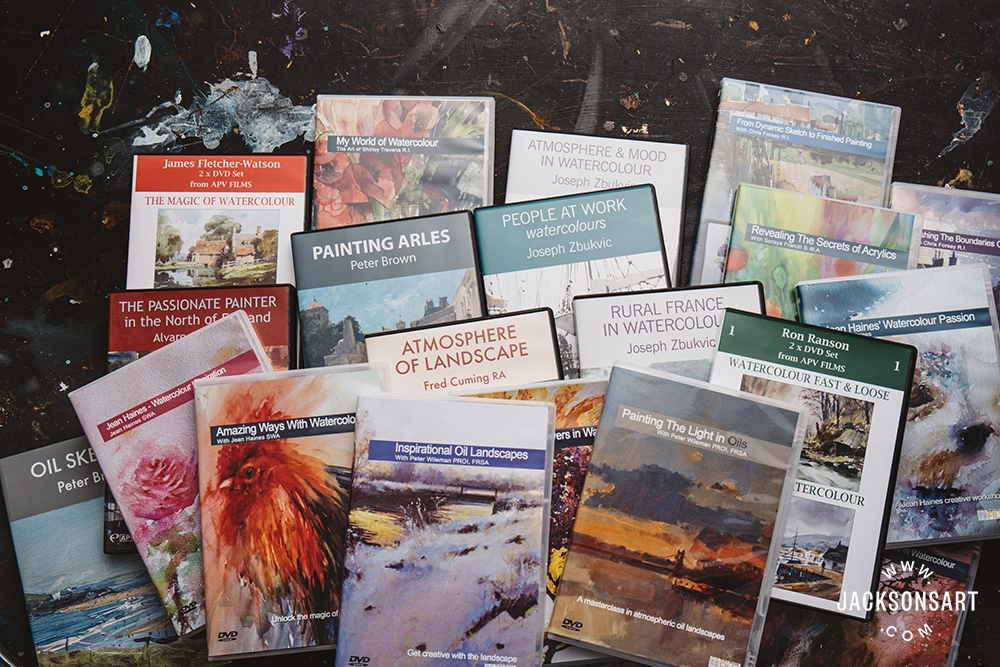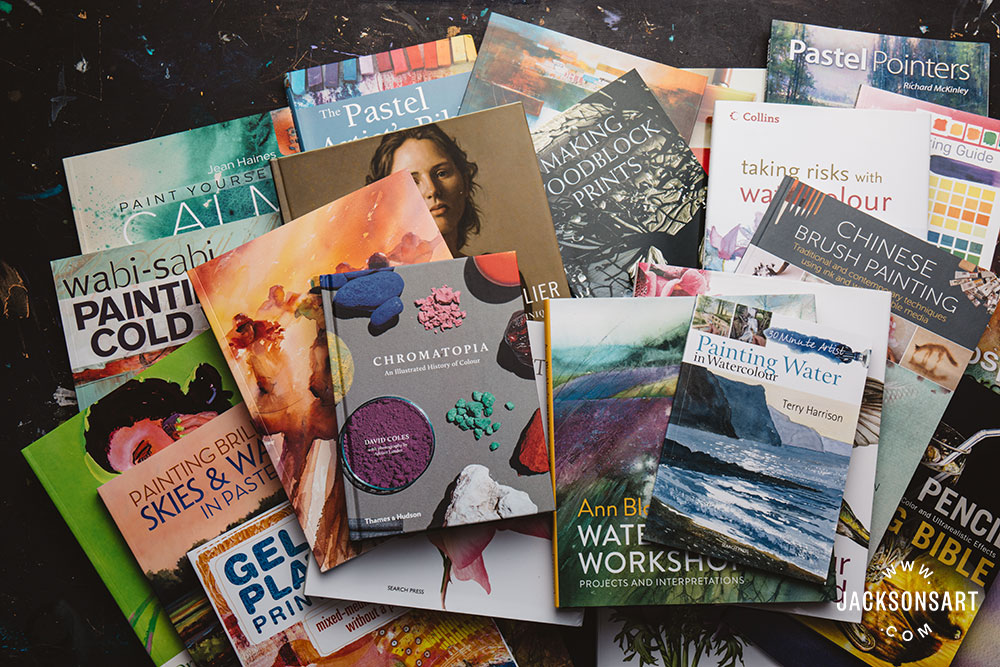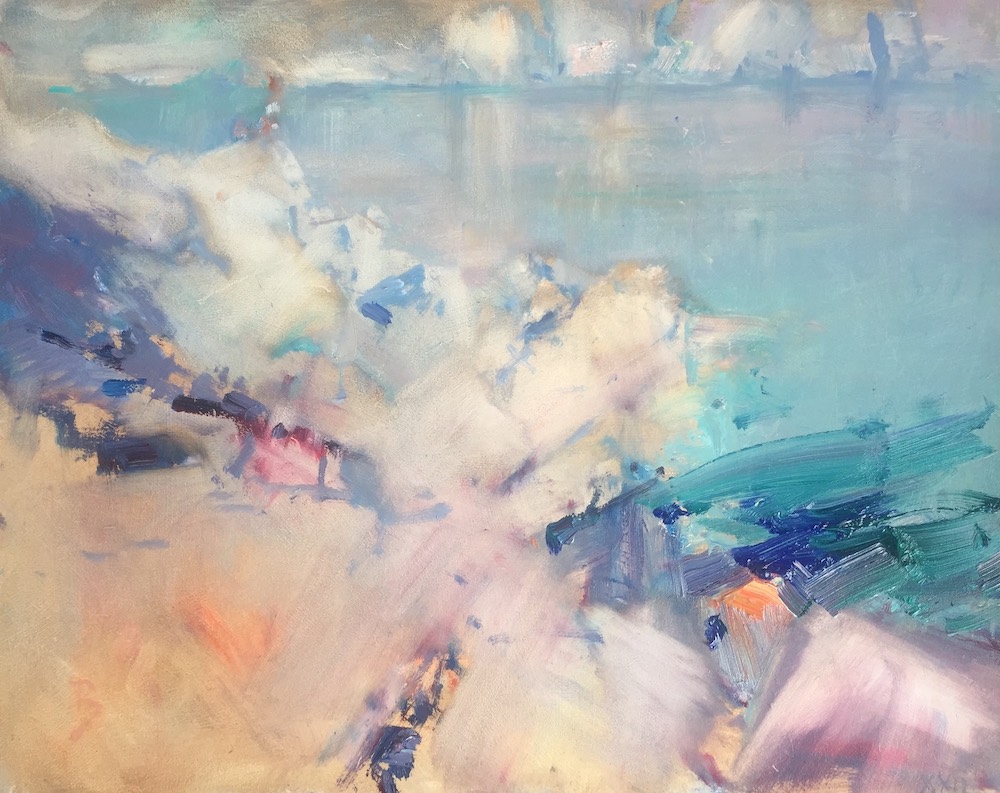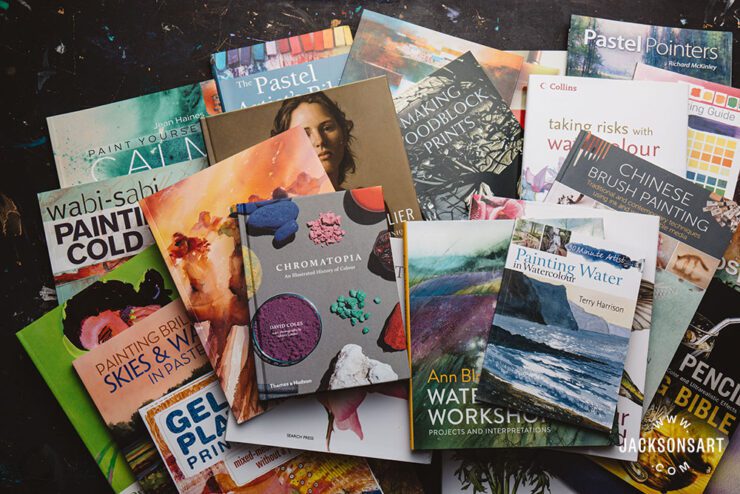Are you really keen to learn how to paint well, but are just continually getting frustrated with your progress?
No matter how many books you read, or videos you watch, your paintings are just not getting any better?
Ask yourself these three important questions and you may discover why:
Question #1: Does your learning process look like this?
Now that you have decided to learn how to paint, how are you going about the process? Are you:
- buying and building a large collection of book on different ways to paint?
- watching dozens of DVD’s or online videos of painting demonstrations?
- browsing one article after another on painting in how-to magazine articles?
- spending hours watching lots of YouTube videos?


This is not a very organized way to learn how to paint. Imagine flying in a plane in which the pilot was trained in such a way, without any structure. Would you want to fly on that plane? You would want a trained pilot who had gone through a highly structured training program to ensure he or she was fully competent, and had all the skills needed to get you safely to your destination.
To get good at something, there are fundamental skills you need to learn. If your learning process is haphazard, you are highly likely to miss a lot of those really important fundamental things.
Question #2: Knowing is not the same as doing
Many people who want to learn how to paint read a lot about the subject, watch videos, or observe experienced artists creating their work. But is this where does the real learning take place? A lot of research into learning theory shows that you only learn through doing, not through just reading or watching. Learning is experiential, in which you acquire new insights into some process process by trial and error. Making mistakes and struggling is the key to learning. This is the only way you can make the necessary mental shifts needed to put your knowledge into actual practice.
Without this experiential learning, when you come to paint, your painting fails. So ask yourself, are you actively working on a set of specific exercises and assignments that have been specifically designed to give you these learning experiences, or do you learn how to paint by just passively consuming educational resources?
Question #3: Do you have a goal?
Do have you a plan for how to improve your painting skills? Is your plan written down? Are you making steady progress against this plan? If the answer to these questions is no, then this may be your biggest problem. It is well known that you need a goal in order to make progress. When you have a plan, and systematically execute it, you feel good about yourself and begin to make real progress.
Summary
Learning how to paint is an exciting and rewarding journey that allows you to express your creativity, and bring pleasure to your viewers. Whether you’re interested in traditional painting (using oil paints) or more contemporary styles (using digital painting), there are many fundamental skills you need to learn in order to achieve your personal goals. And it will not help to just read about them or watch someone else doing them. You have to pick up your paintbrush and practice them yourself.
Learning to paint is not easy, so do not make it even harder than it is. You can learn how to paint—I have many students who started off as absolute beginners and are now getting into art exhibitions, being accepted into art associations, and even selling their work in professional galleries. You can do it. But get organized first and get some structure in your learning!
I hope these tips to help you learn how to paint have been helpful, and make you want to get more organized and active in your learning process.
Happy painting!
Barry


Is your instruction abstract (abstract realism) like the painting here?
That is a good question. In my view, all paintings, including representational paintings, need to carefully consider the abstract nature of their design in order to be effective. A painting that is an exact copy of nature, is no better than a photograph, and lacks the critical artistic quality that makes paintings work. So to answer your question, my instruction includes abstract design principles, and you need to use these principles always, whether you are doing highly representational work, or pure abstract work, or anything on the continuum between them.
But if one doesn’t have access to an in person painting class or instructor, You Tube and other online classes become the instructor and the only source. Depending on how one learns, However, by learning in this manner, there is no one to correct or edit what one is doing wrong and how to correct.
Yes you are right. That is the problem with all self-study programs. The additional problem with YouTube videos, is that you cannot trust the information there. A lot of the videos are made by artists who have not had a solid training themselves, and so are passing on bad practices in their tutorials. A beginner will not be able to tell the difference between good and poor instruction.
My approach when building the Virtual Art Academy self-study program, was to focus on breaking the skills down into much simpler tasks. I then give students very clear instructions on how to do those tasks. Since they are so easy to do, there is very little chance of getting them wrong. By breaking learning into a larger number of smaller tasks and skills, this overcomes many of the limitations of self-study programs. This way, you can get good quality instruction from a self-study program at a far lower cost than live instruction from a top professional artist. Also, all the content is checked by me to ensure it is at the level of quality of a top atelier, or Art Academy, so that you know you are getting quality information, and will not pick up bad painting habits. I hope this answers your question.